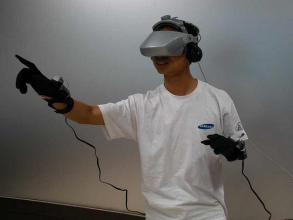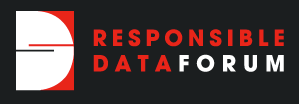
On November 14 Technology Salon NYC met to discuss issues related to the role of film and video in development and humanitarian work. Our lead discussants were Ambika Samarthya from Praekelt.org; Lina Srivastava of CIEL, and Rebekah Stutzman, from Digital Green’s DC office.
How does film support aid and development work?
Lina proposed that there are three main reasons for using video, film, and/or immersive media (such as virtual reality or augmented reality) in humanitarian and development work:
- Raising awareness about an issue or a brand and serving as an entry point or a way to frame further actions.
- Community-led discussion/participatory media, where people take agency and ownership and express themselves through media.
- Catalyzing movements themselves, where film, video, and other visual arts are used to feed social movements.
Each of the above is aimed at a different audience. “Raising awareness” often only scratches the surface of an issue and can have limited impact if done on its own without additional actions. Community-led efforts tend to go deeper and focus on the learning and impact of the process (rather than the quality of the end product) but they usually reach fewer people (thus have a higher cost per person and less scale). When using video for catalyzing moments, the goal is normally bringing people into a longer-term advocacy effort.
In all three instances, there are issues with who controls access to tools/channels, platforms, and distribution channels. Though social media has changed this to an extent, there are still gatekeepers that impact who gets to be involved and whose voice/whose story is highlighted, funders who determine which work happens, and algorithms that dictate who will see the end products.
Participants suggested additional ways that video and film are used, including:
- Social-emotional learning, where video is shown and then discussed to expand on new ideas and habits or to encourage behavior change.
- Personal transformation through engaging with video.
Becky shared Digital Green’s approach, which is participatory and where community members to use video to help themselves and those around them. The organization supports community members to film videos about their agricultural practices, and these are then taken to nearby communities to share and discuss. (More on Digital Green here). Video doesn’t solve anyone’s development problem all by itself, Becky emphasized. If an agricultural extensionist is no good, having a video as part of their training materials won’t solve that. “If they have a top-down attitude, don’t engage, don’t answer questions, etc., or if people are not open to changing practices, video or no video, it won’t work.”
How can we improve impact measurement?
Questions arose from Salon participants around how to measure impact of film in a project or wider effort. Overall, impact measurement in the world of film for development is weak, noted one discussant, because change takes a long time and it is hard to track. We are often encouraged to focus on the wrong things like “vanity measurements” such as “likes” and “clicks,” but these don’t speak to longer-term and deeper impact of a film and they are often inappropriate in terms of who the audience is for the actual films (E.g., are we interested in impact on the local audience who is being impacted by the problem or the external audience who is being encouraged to care about it?)
Digital Green measures behavior change based on uptake of new agriculture practices. “After the agriculture extension worker shows a video to a group, they collect data on everyone that’s there. They record the questions that people ask, the feedback about why they can’t implement a particular practice, and in that way they know who is interested in trying a new practice.” The organization sets indicators for implementing the practice. “The extension worker returns to the community to see if the family has implemented a, b, c and if not, we try to find out why. So we have iterative improvement based on feedback from the video.” The organization does post their videos on YouTube but doesn’t know if the content there is having an impact. “We don’t even try to follow it up as we feel online video is much less relevant to our audience.” An organization that is working with social-emotional learning suggested that RCTs could be done to measure which videos are more effective. Others who work on a more individual or artistic level said that the immediate feedback and reactions from viewers were a way to gauge impact.
Donors often have different understandings of useful metrics. “What is a valuable metric? How can we gather it? How much do you want us to spend gathering it?” commented one person. Larger, longer-term partners who are not one-off donors will have a better sense of how to measure impact in reasonable ways. One person who formerly worked at a large public television station noted that it was common to have long conversation about measurement, goals, and aligning to the mission. “But we didn’t go by numbers, we focused on qualitative measurement.” She highlighted the importance of having these conversations with donors and asking them “why are you partnering with us?” Being able to say no to donors is important, she said. “If you are not sharing goals and objectives you shouldn’t be working together. Is gathering these stories a benefit to the community ? If you can’t communicate your actual intent, it’s very complicated.”
The goal of participatory video is less about engaging external (international) audiences or branding and advocacy. Rather it focuses on building skills and capacities through the process of video making. Here, the impact measurement is more related to individual, and often self-reported, skills such as confidence, finding your voice, public speaking, teamwork, leadership skills, critical thinking and media literacy. The quality of video production in these cases may be low, and videos unsuitable for widespread circulation, however the process and product can be catalysts for local-level change and locally-led advocacy on themes and topics that are important to the video-makers.
Participatory video suffers from low funding levels because it doesn’t reach the kind of scale that is desired by funders, though it can often contribute to deep, personal and community-level change. Some felt that even if community-created videos were of high production quality and translated to many languages, large-scale distribution is not always feasible because they are developed in and speak to/for hyper-local contexts, thus their relevance can be limited to smaller geographic areas. Expectation management with donors can go a long way towards shifting perspectives and understanding of what constitutes “impact.”
Should we re-think compensation?
Ambika noted that there are often challenges related to incentives and compensation when filming with communities for organizational purposes (such as branding or fundraising). Organizations are usually willing to pay people for their time in places such New York City and less inclined to do so when working with a rural community that is perceived to benefit from an organization’s services and projects. Perceptions by community members that a filmmaker is financially benefiting from video work can be hard to overcome, and this means that conflict may arise during non-profit filmmaking aimed at fundraising or building a brand. Even when individuals and communities are aware that they will not be compensated directly, there is still often some type of financial expectation, noted one Salon participant, such as the purchase of local goods and products.
Working closely with gatekeepers and community leaders can help to ease these tensions. When filmmaking takes several hours or days, however, participants may be visibly stressed or concerned about household or economic chores that are falling to the side during filming, and this can be challenging to navigate, noted one media professional. Filming in virtual reality can exacerbate this problem, since VR filming is normally over-programmed and repetitive in an effort to appear realistic.
One person suggested a change in how we approach incentives. “We spent about two years in a community filming a documentary about migration. This was part of a longer research project. We were not able to compensate the community, but we were able to invest directly in some of the local businesses and to raise funds for some community projects.” It’s difficult to understand why we would not compensate people for their time and their stories, she said. “This is basically their intellectual property, and we’re stealing it. We need a sector rethink.” Another person agreed, “in the US everyone gets paid and we have rules and standards for how that happens. We should be developing these for our work elsewhere.”
Participatory video tends to have less of a challenge with compensation. “People see the videos, the videos are for their neighbors. They are sharing good agricultural or nutrition approaches with people that they already know. They sometimes love being in the videos and that is partly its own reward. Helping people around them is also an incentive,” said one person.
There were several other rabbit holes to explore in relation to film and development, so look for more Salons in 2018!
To close out the year right, join us for ICT4Drinks on December 14th at Flatiron Hall from 7-9pm. If you’re signed up for Technology Salon emails, you’ll find the invitation in your inbox!
Salons run under Chatham House Rule so no attribution has been made in this post. If you’d like to attend a future Salon discussion, join the list at Technology Salon.




 Our Technology Salon in New York City on Oct 7 focused on the
Our Technology Salon in New York City on Oct 7 focused on the 




 99% of my hands-on experience using ICTs in development programming comes from my time at Plan International, much of it spent working alongside and learning from the knowledgeable folks who put this guide together. So I’m really happy to see that now other people can benefit from their expertise as well!
99% of my hands-on experience using ICTs in development programming comes from my time at Plan International, much of it spent working alongside and learning from the knowledgeable folks who put this guide together. So I’m really happy to see that now other people can benefit from their expertise as well!